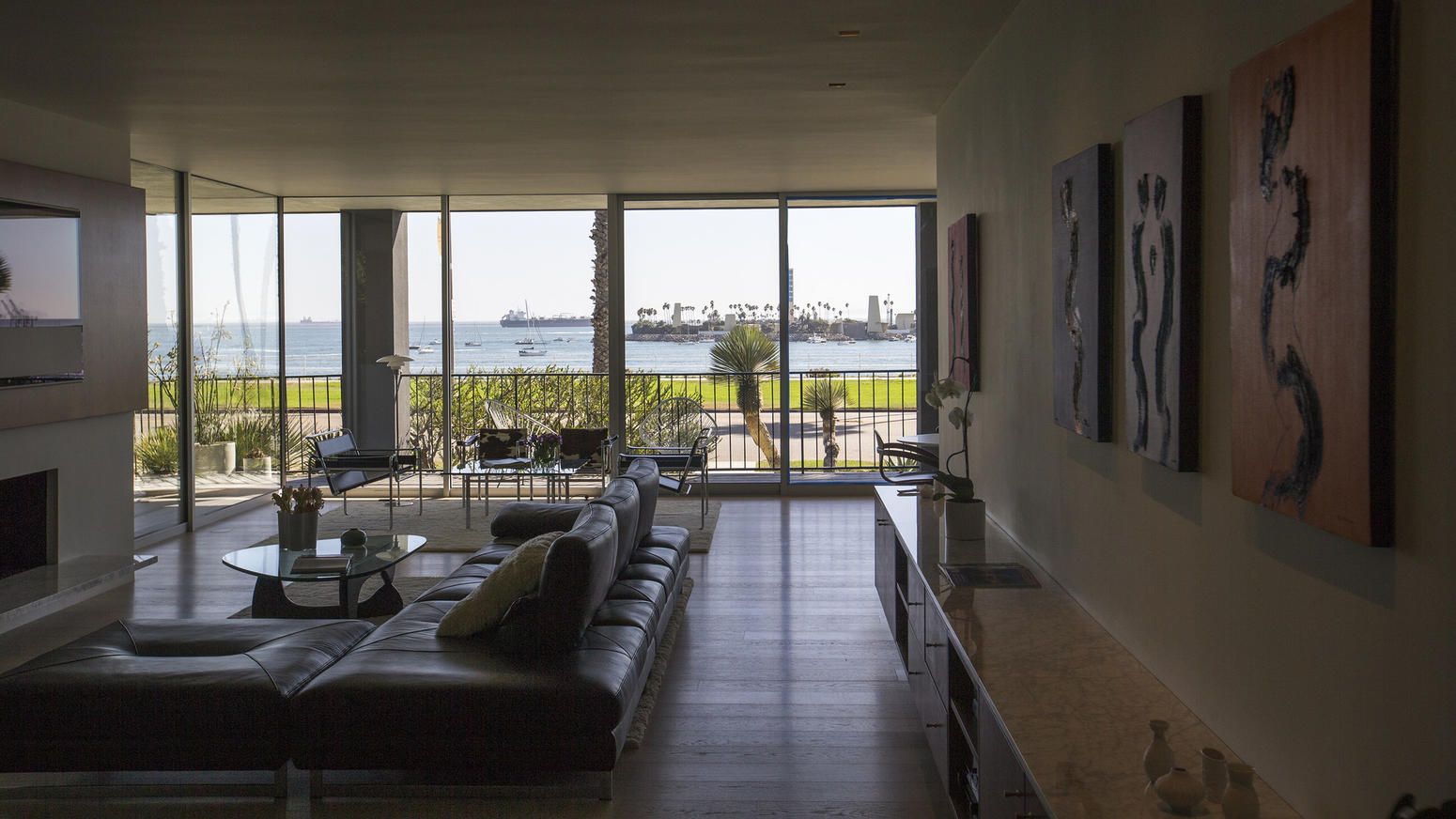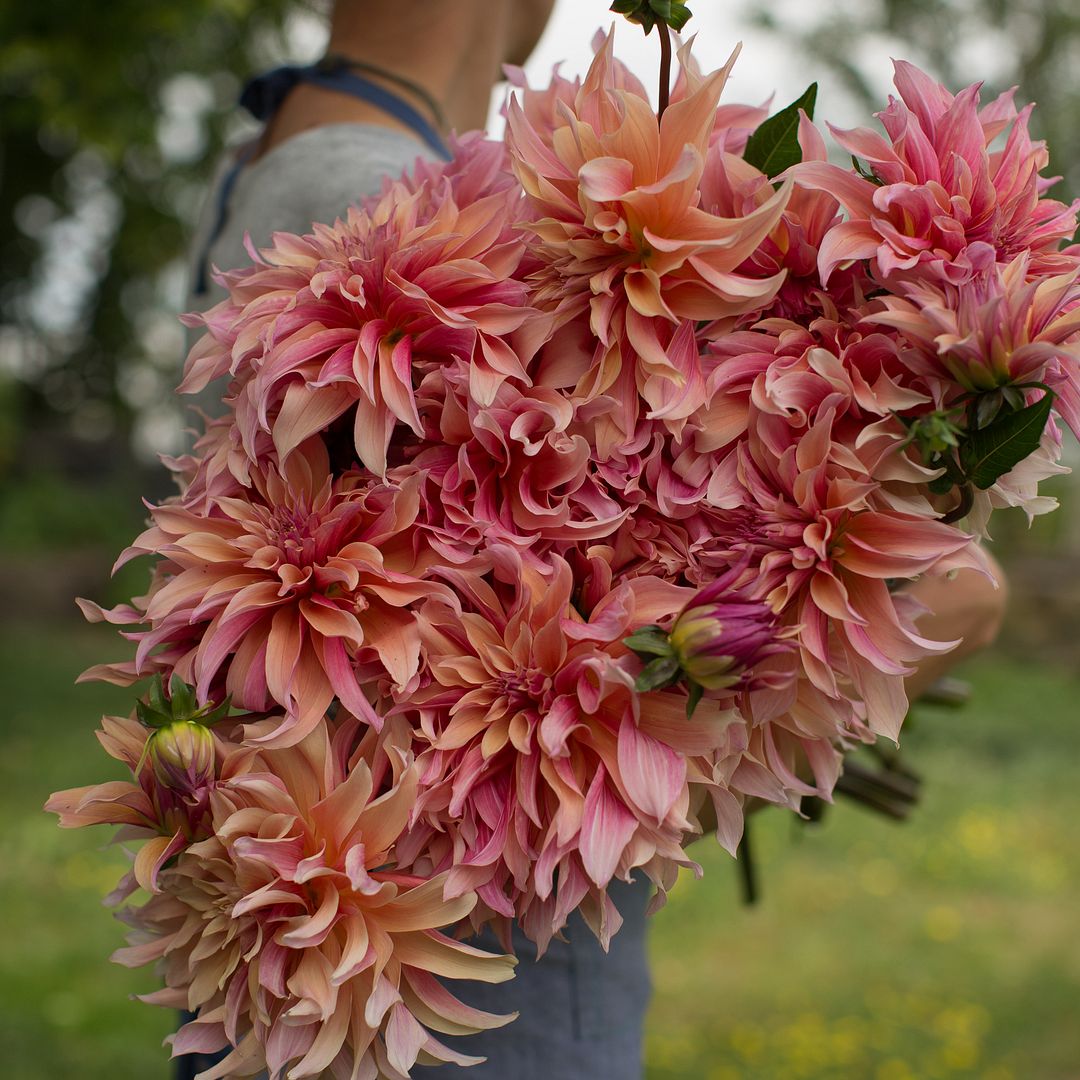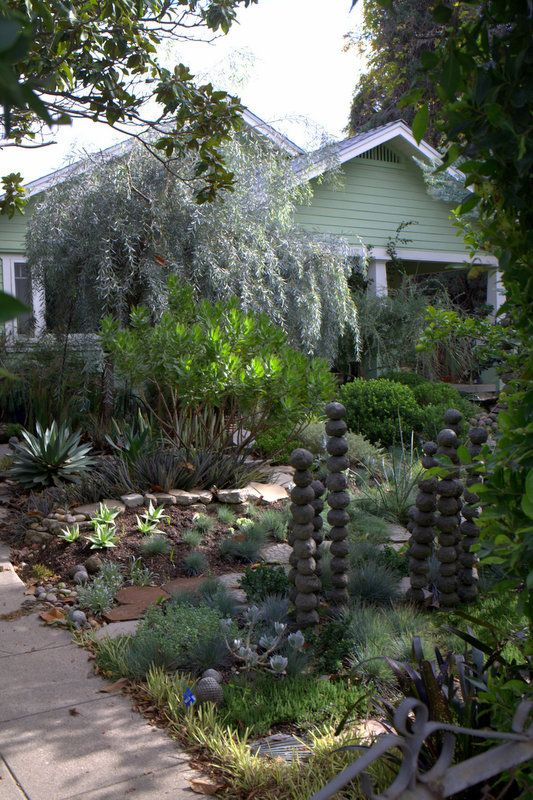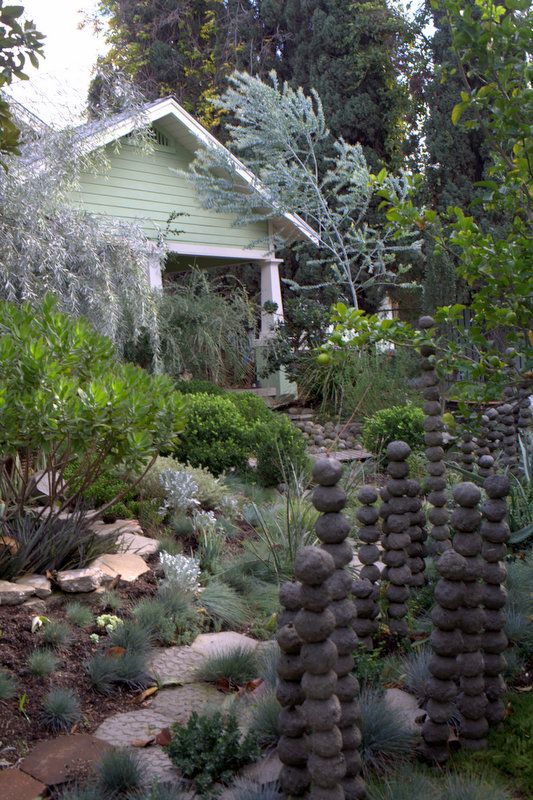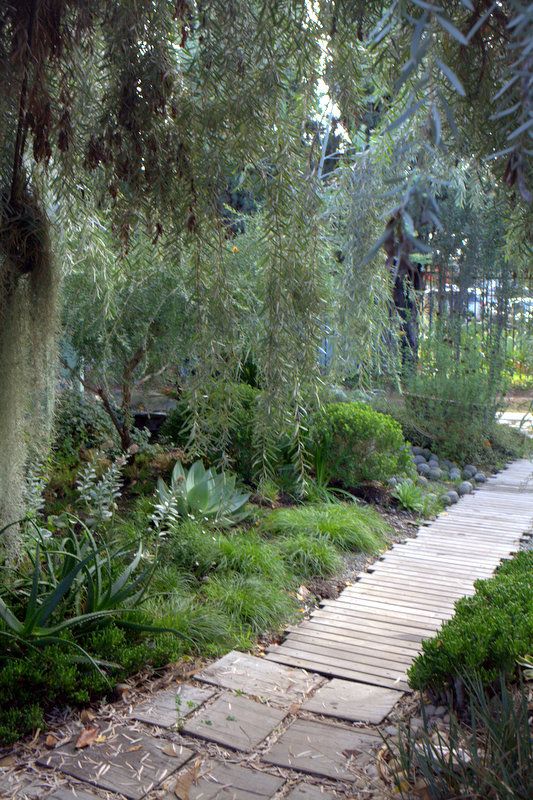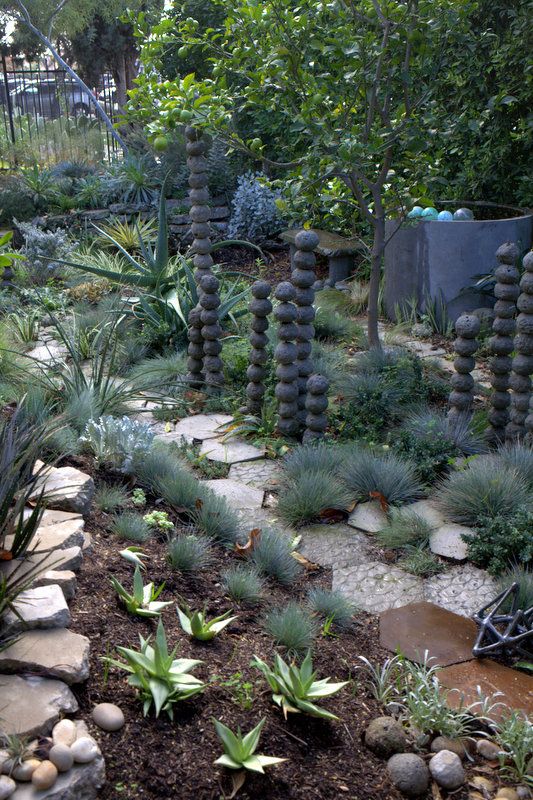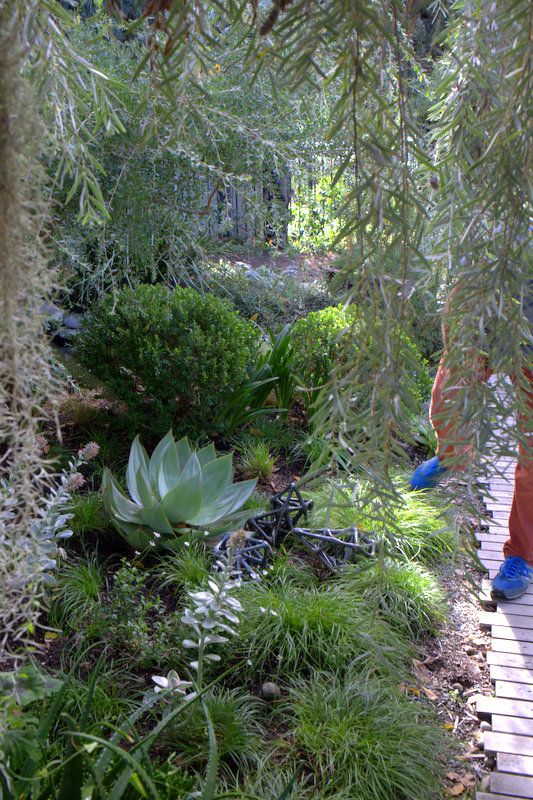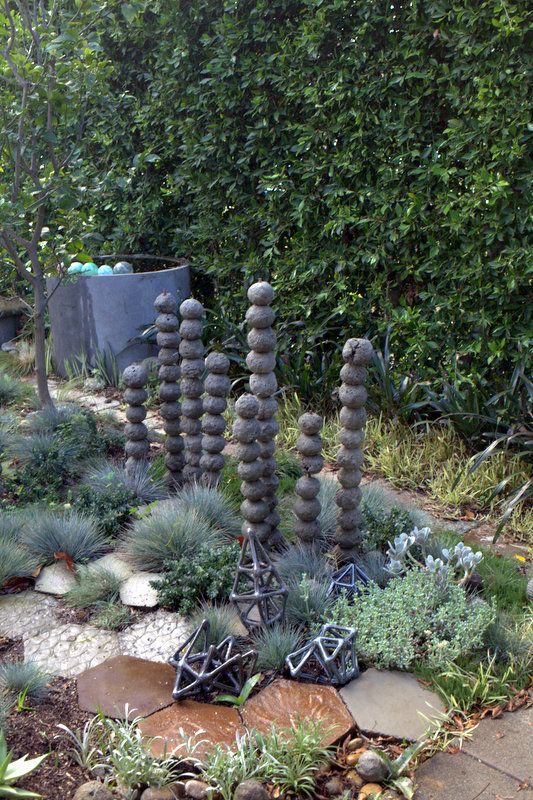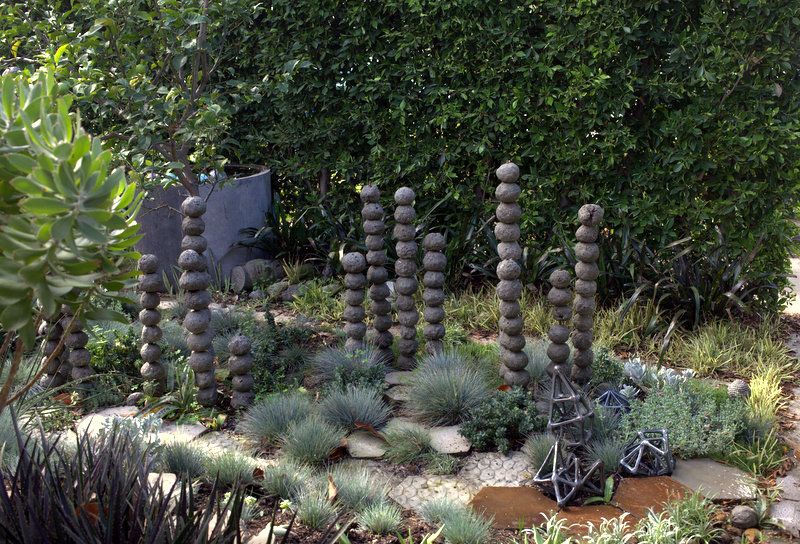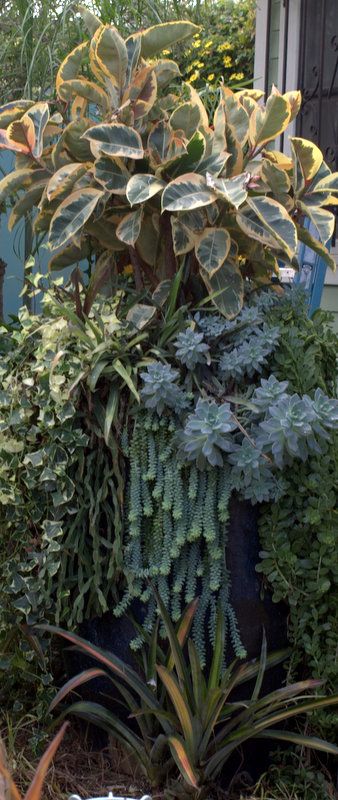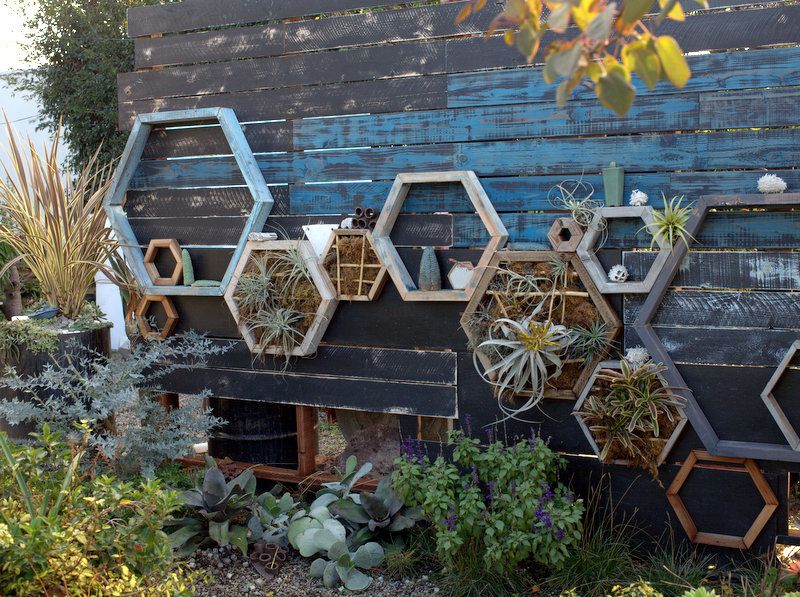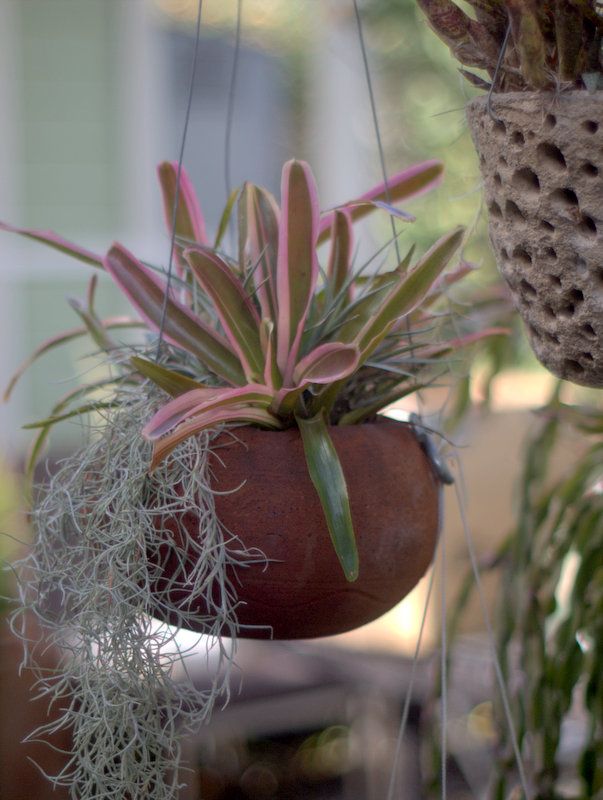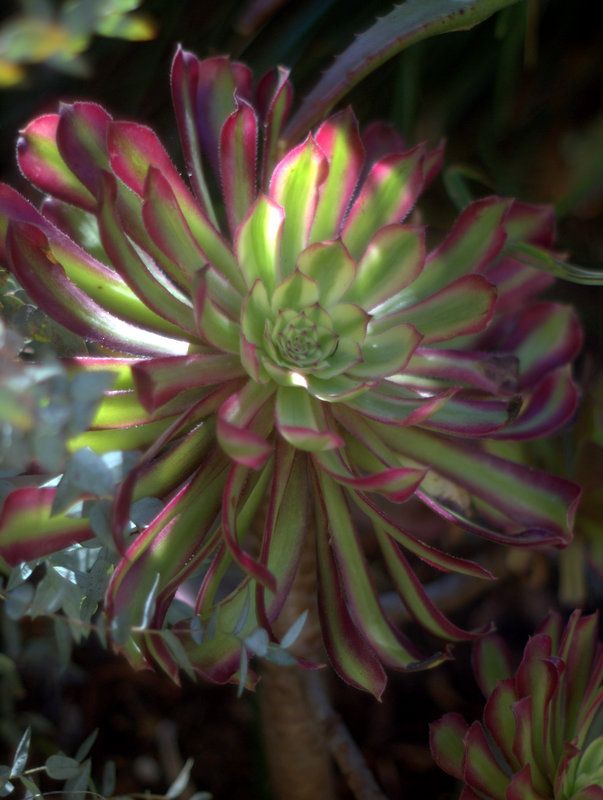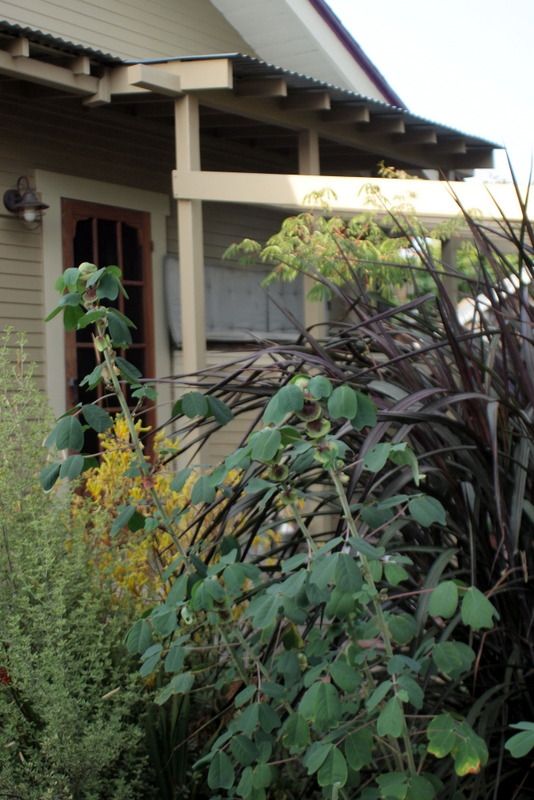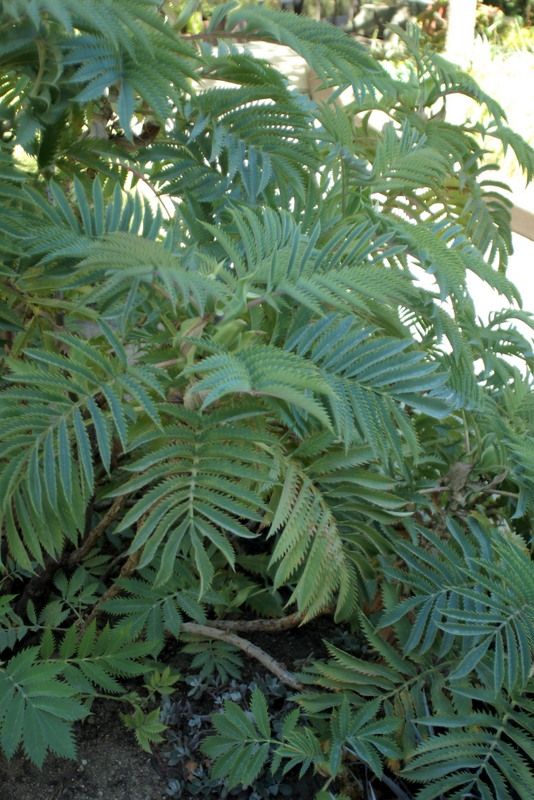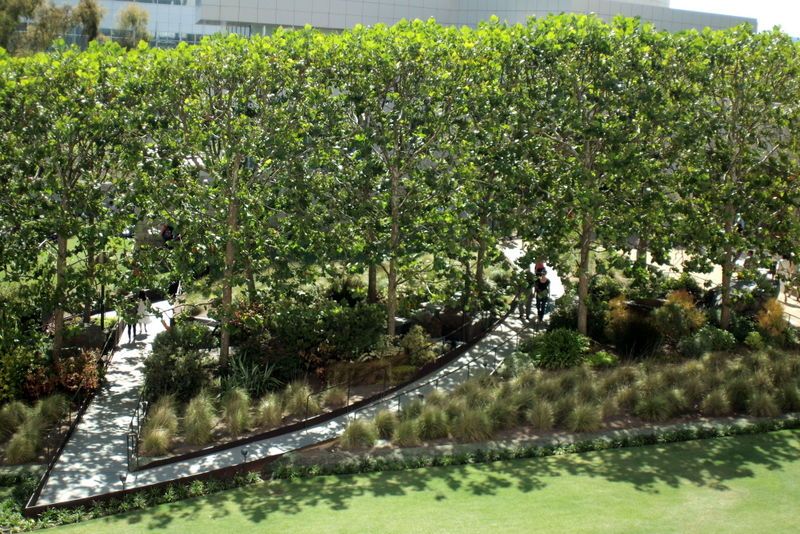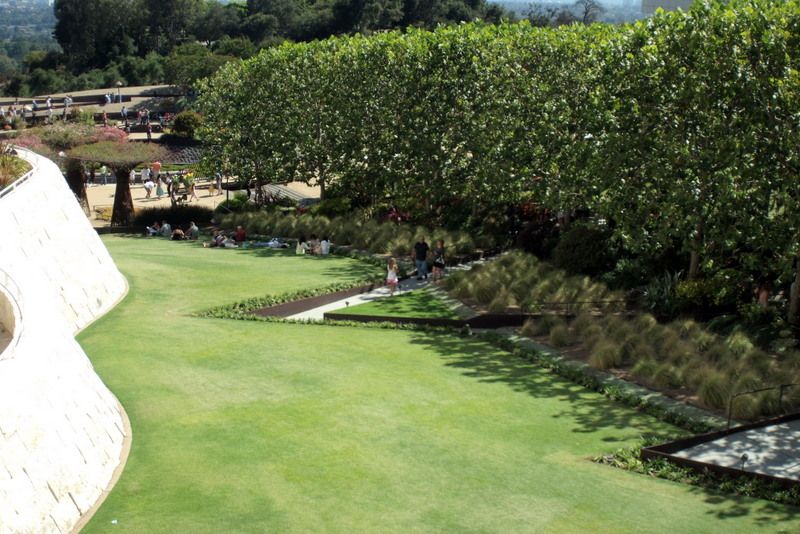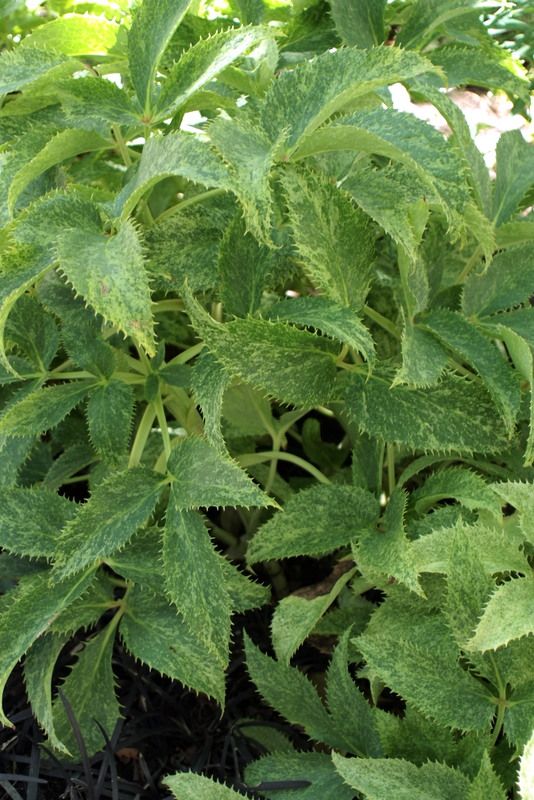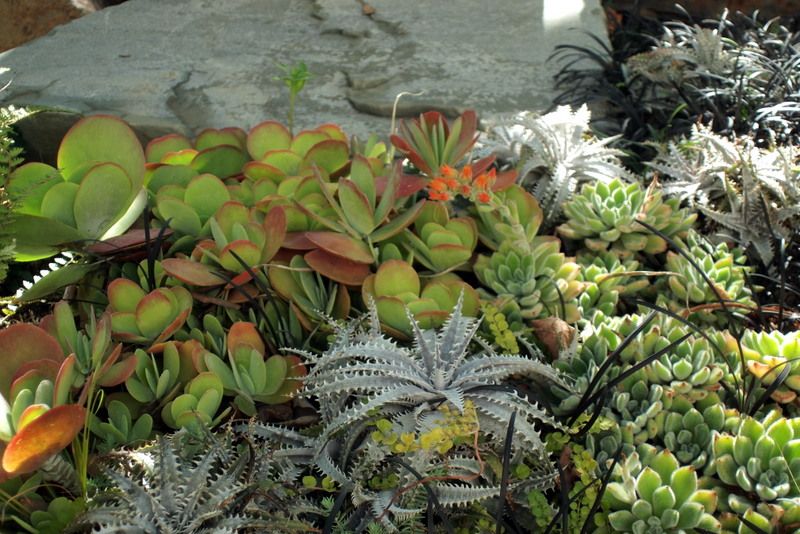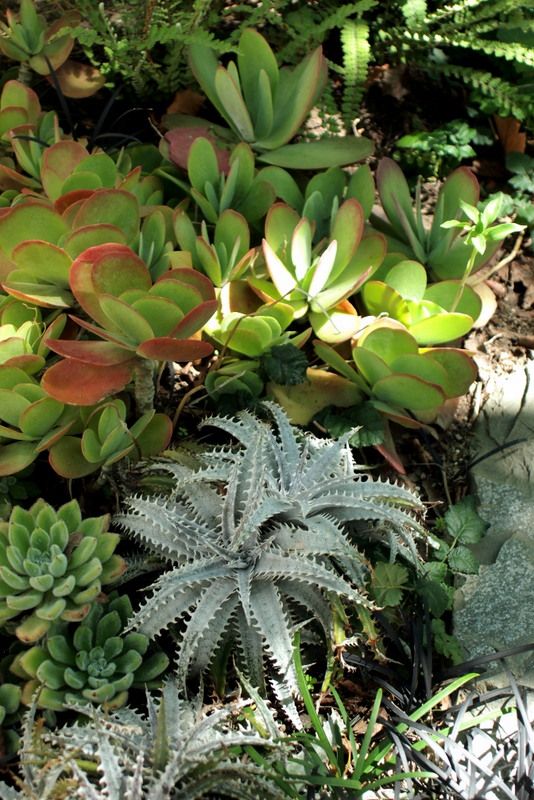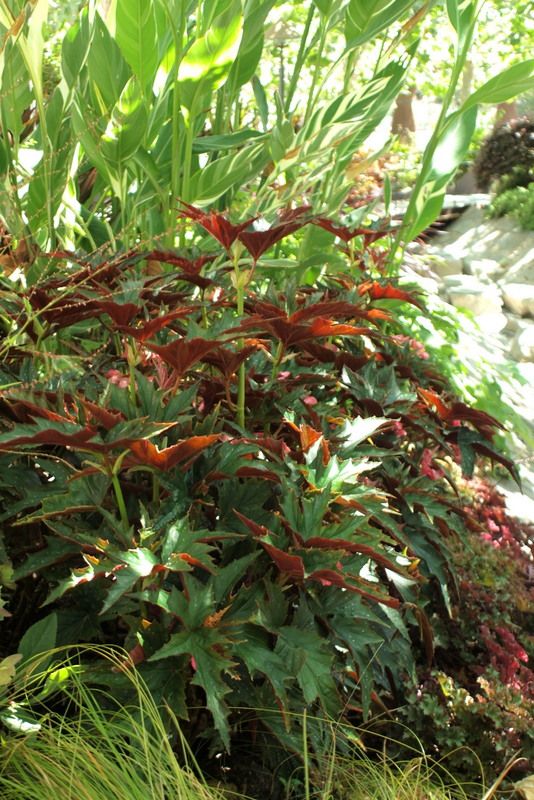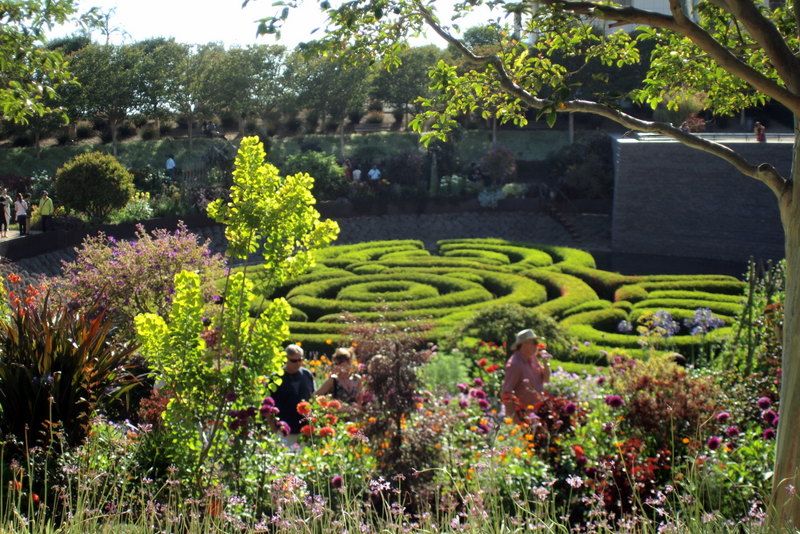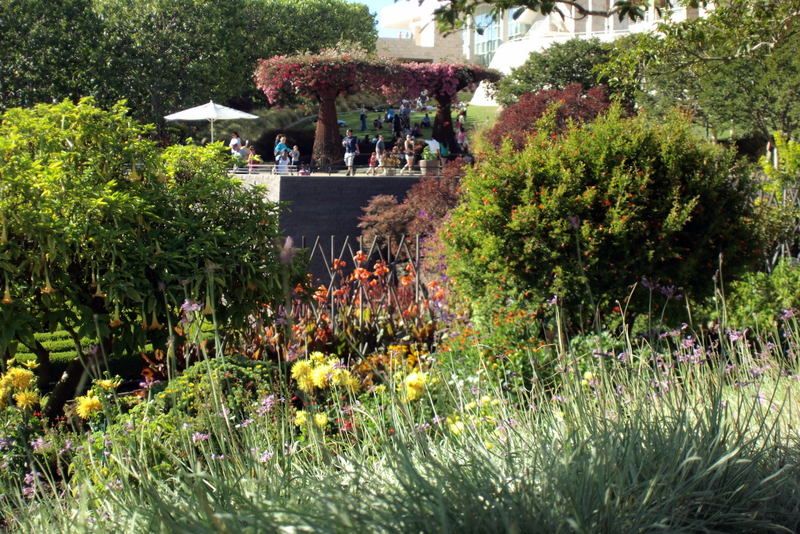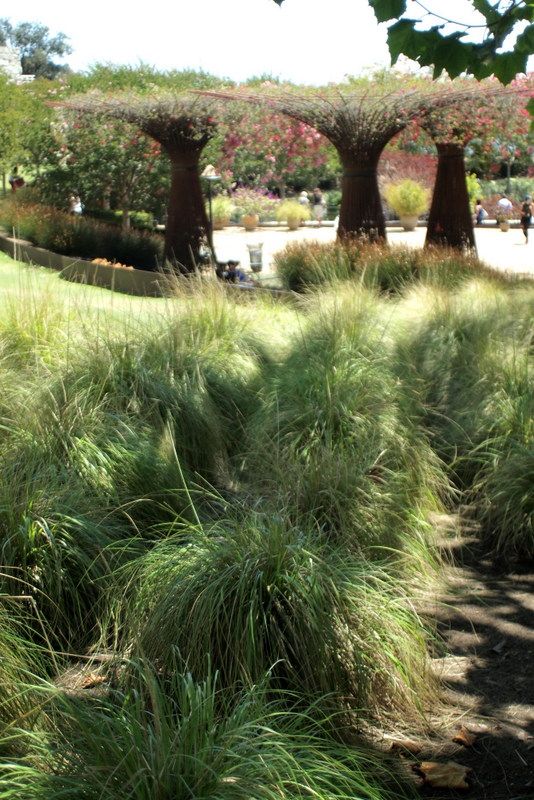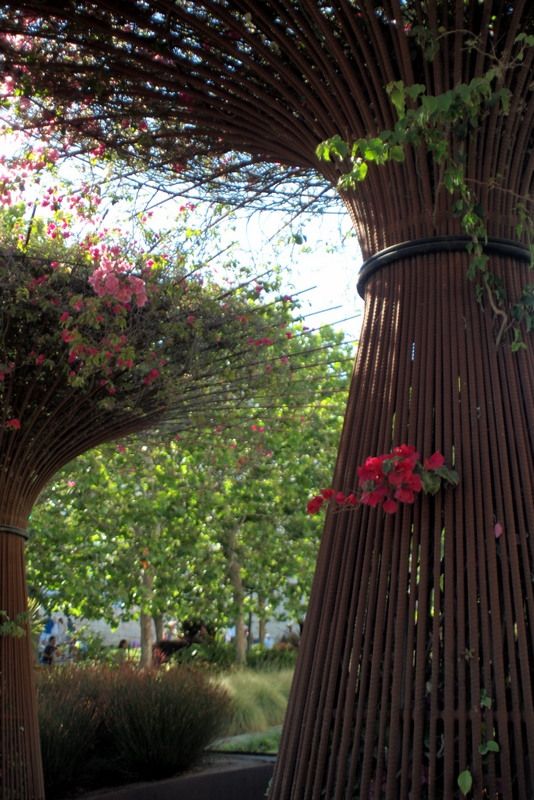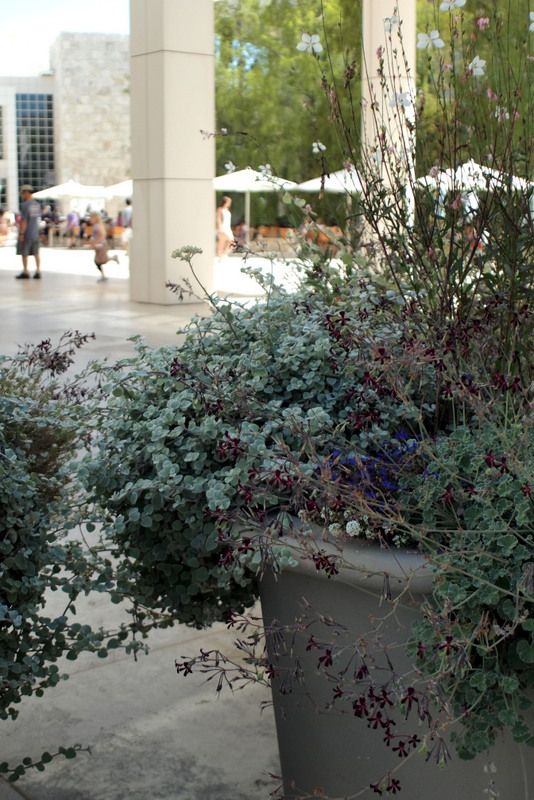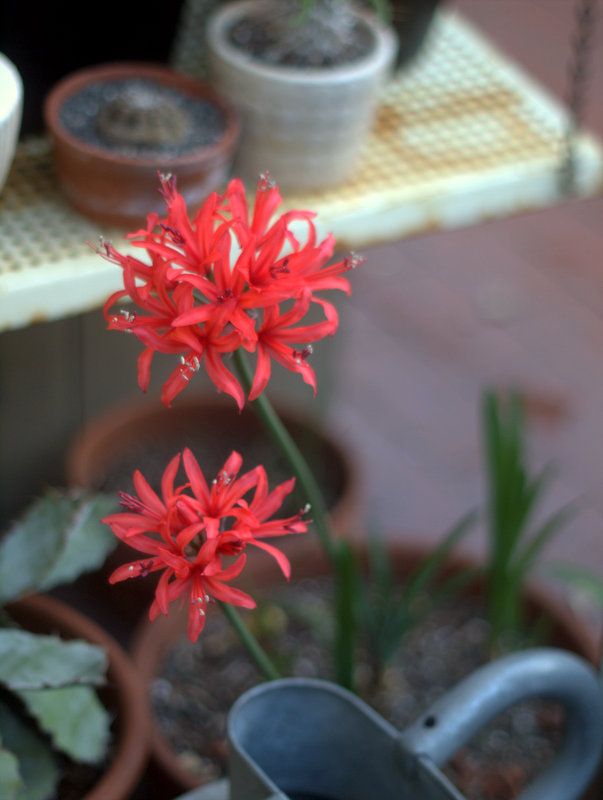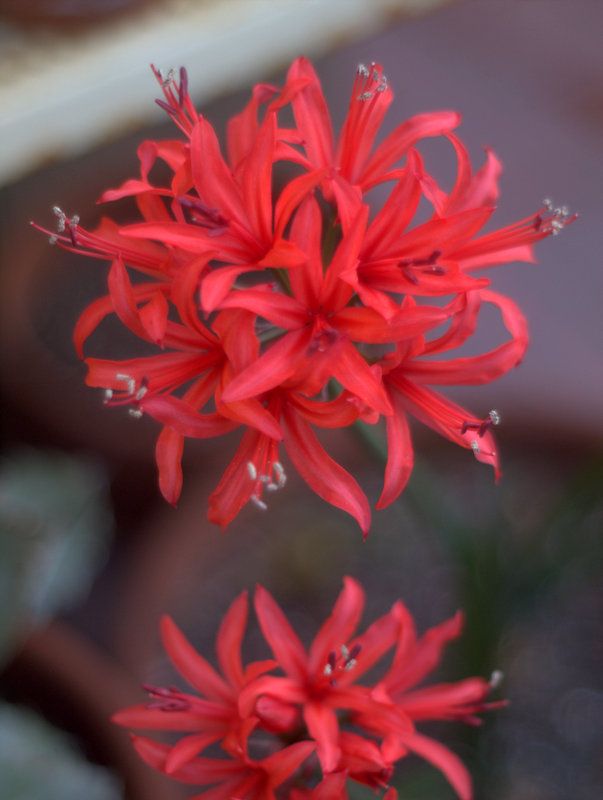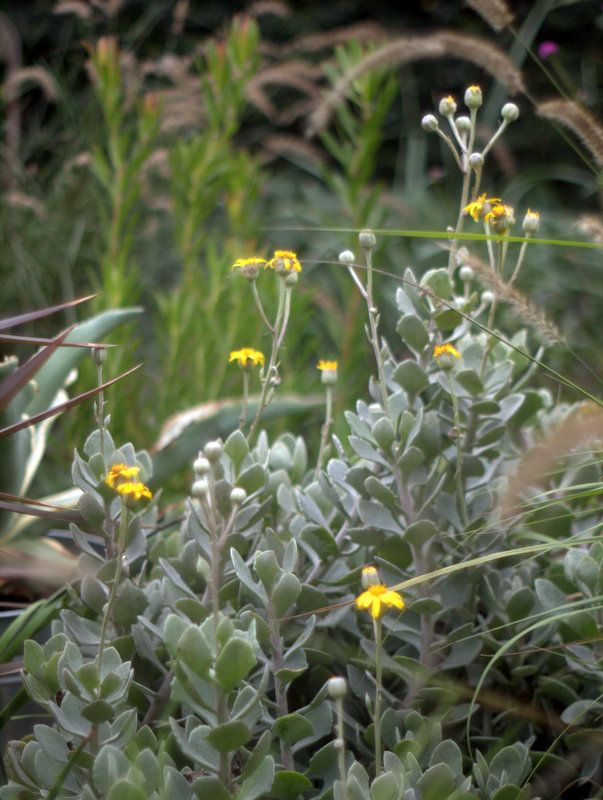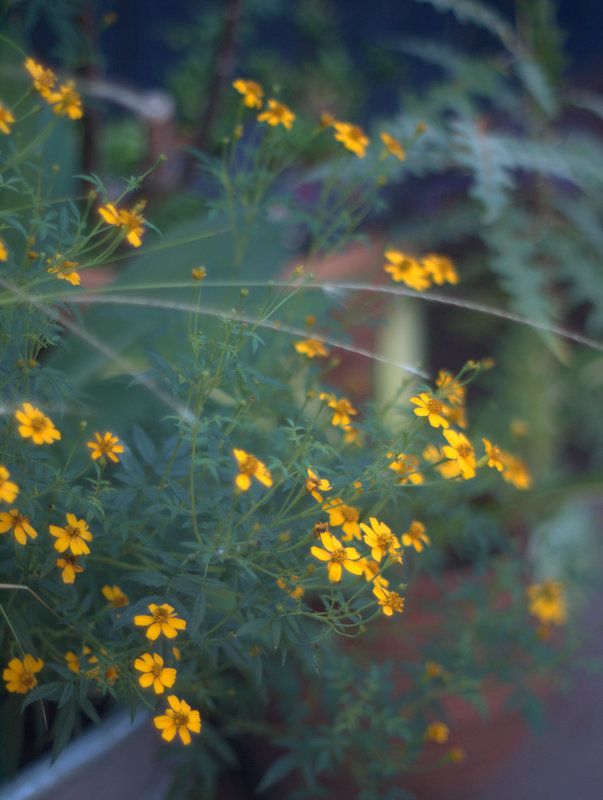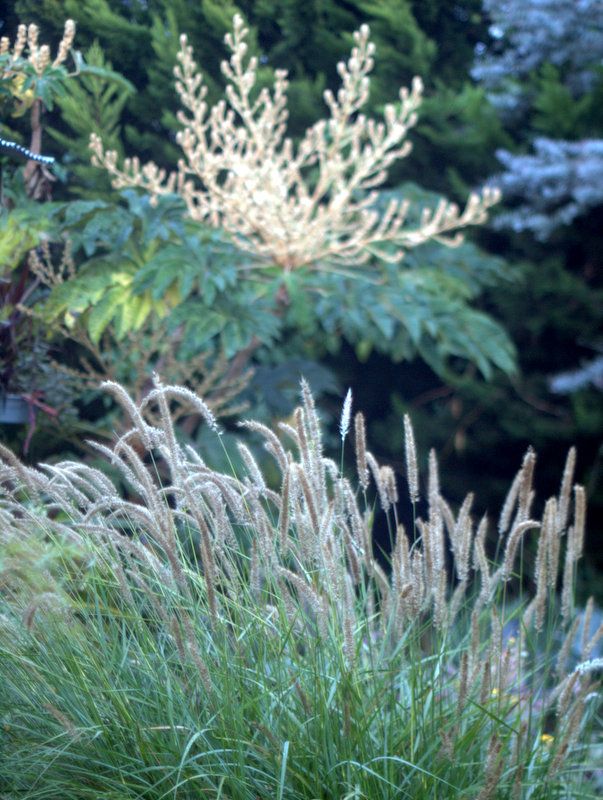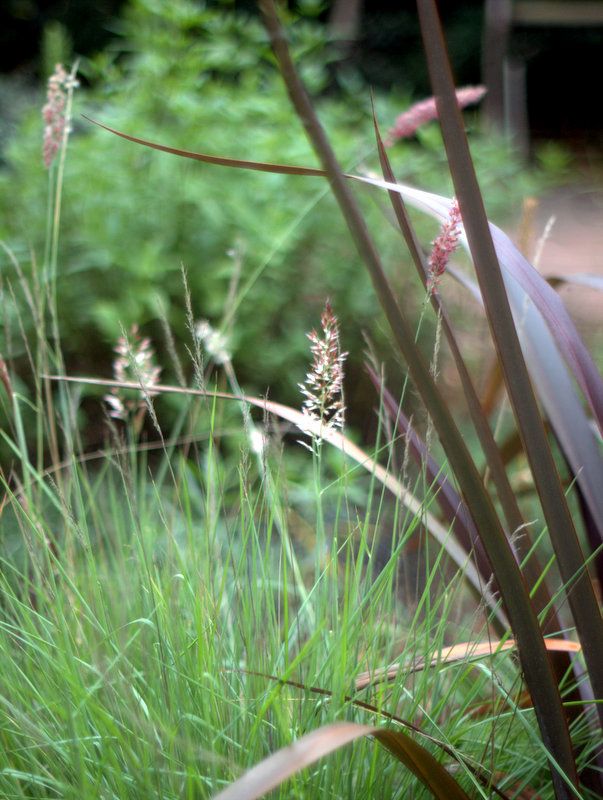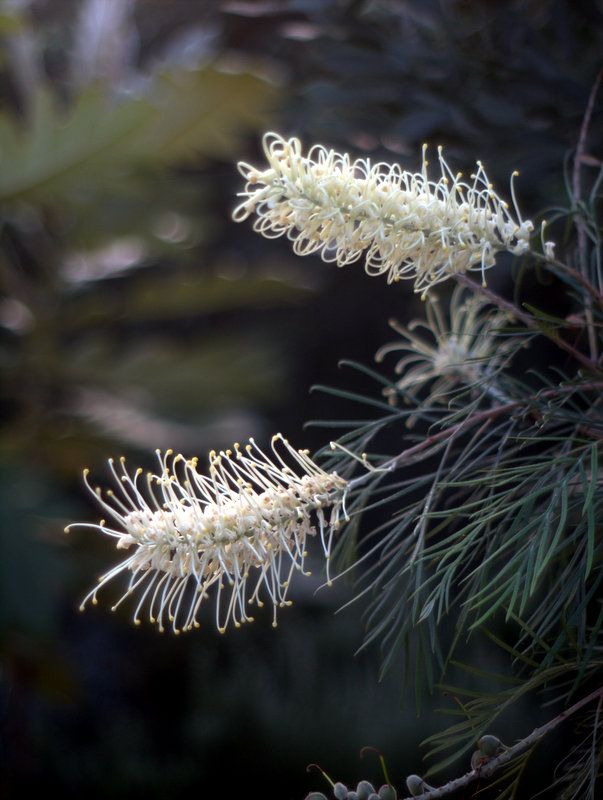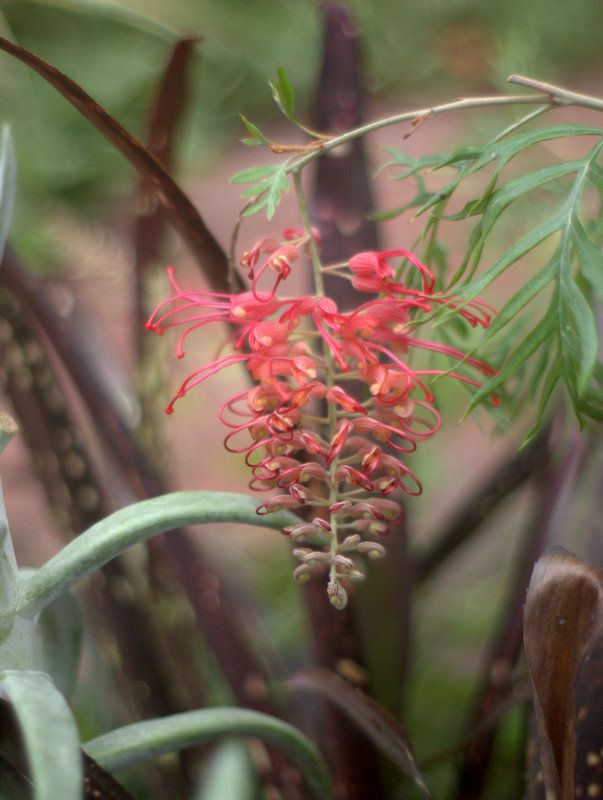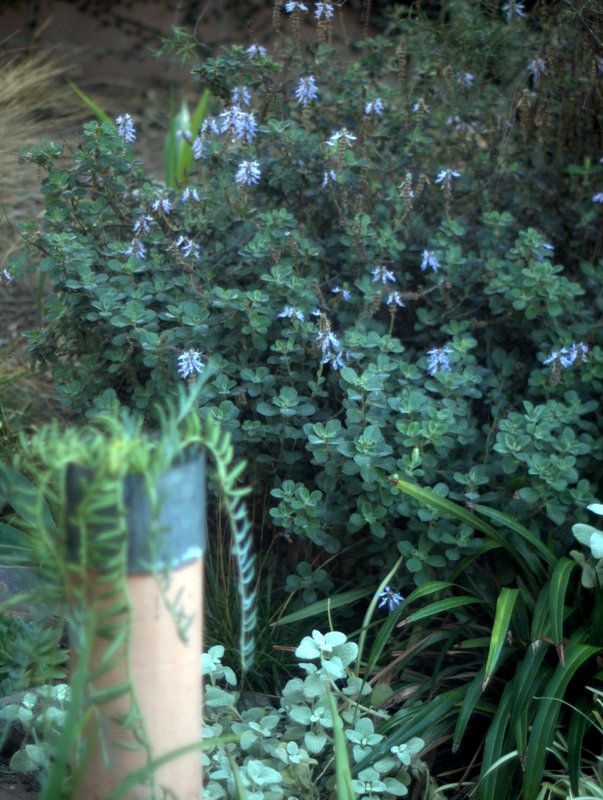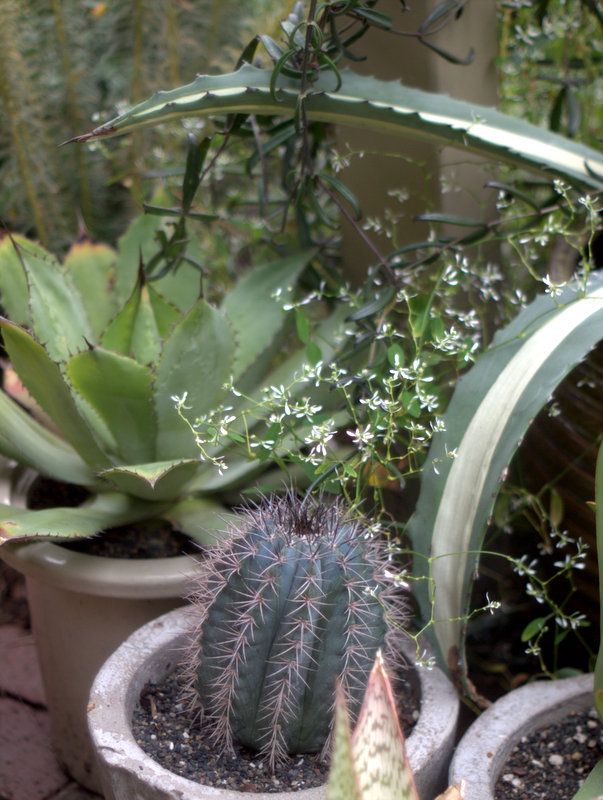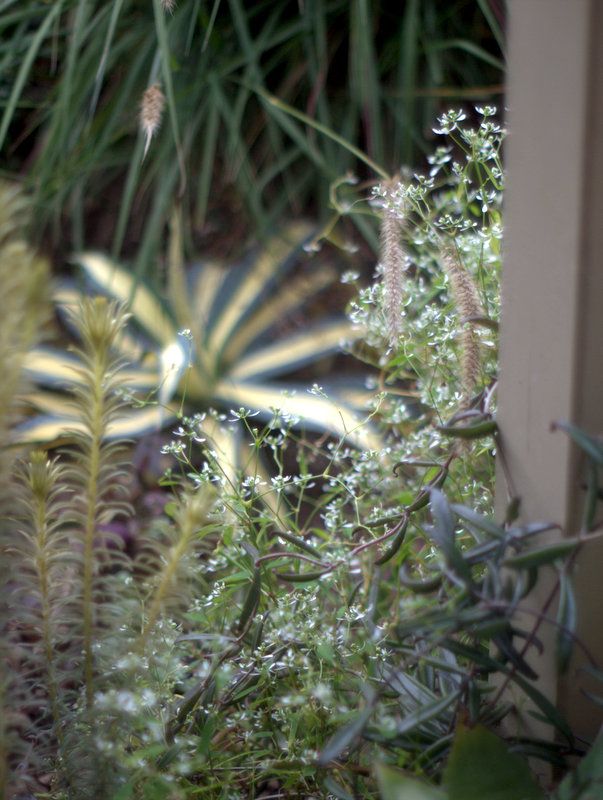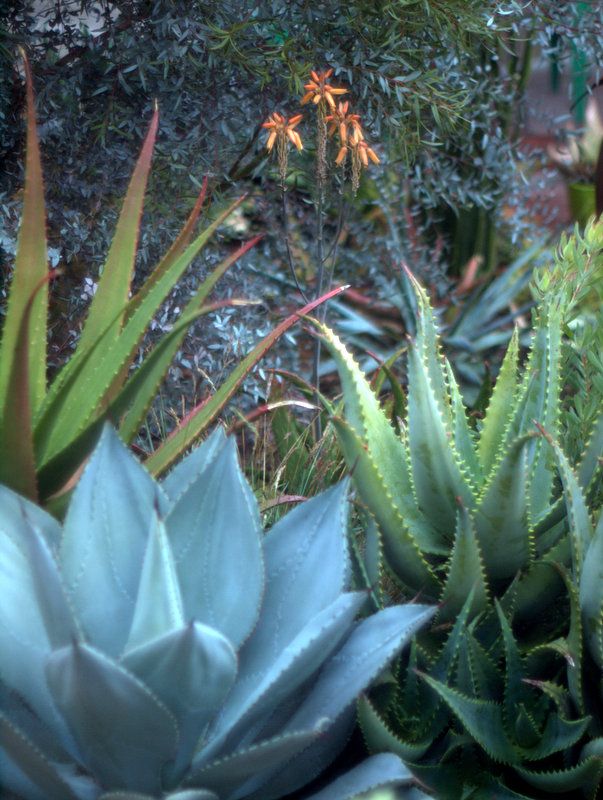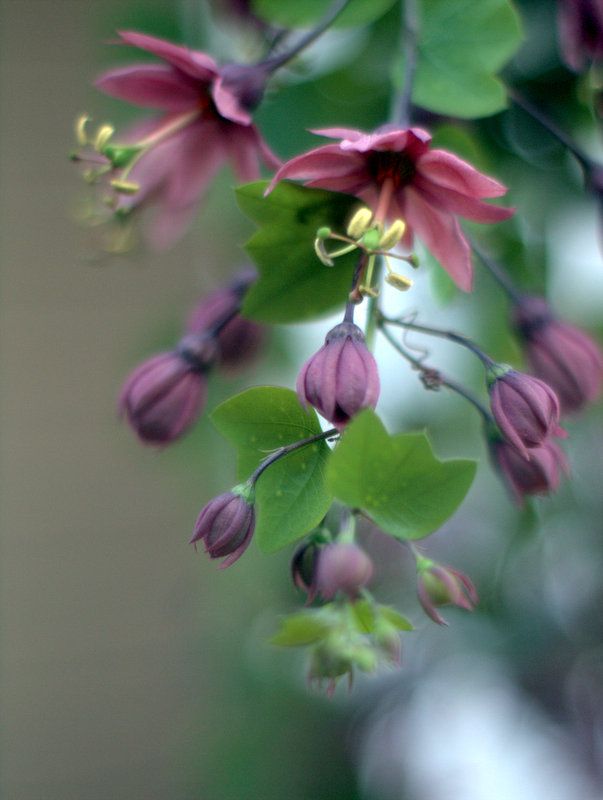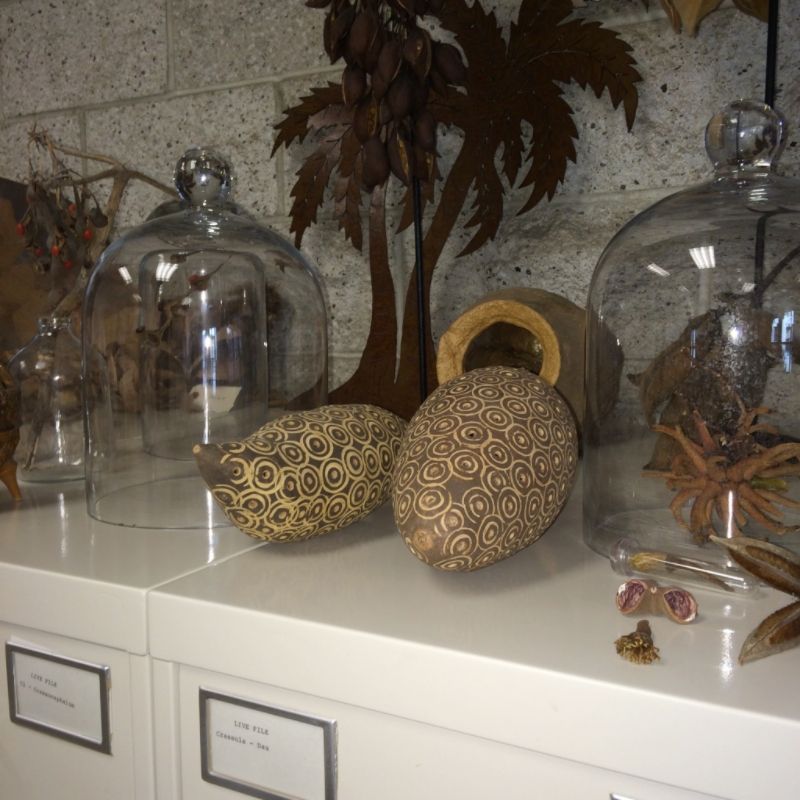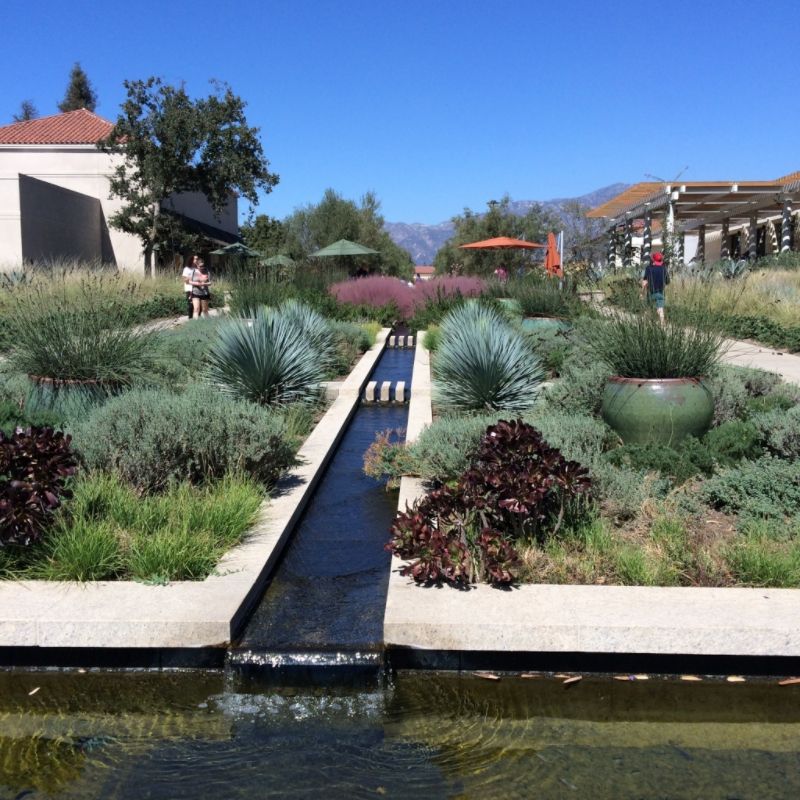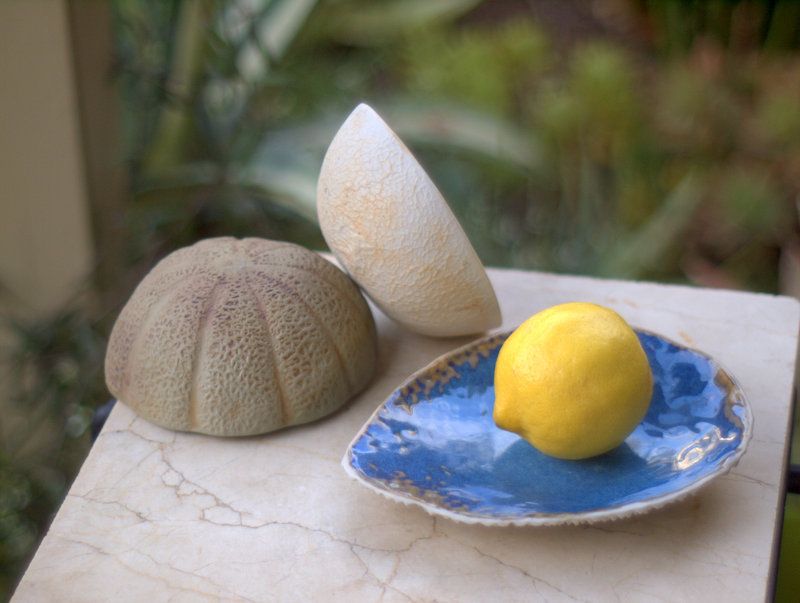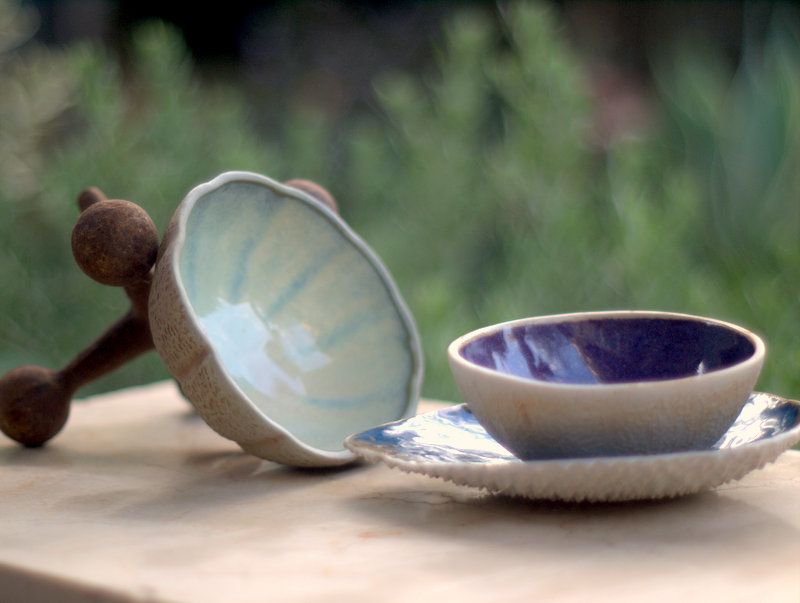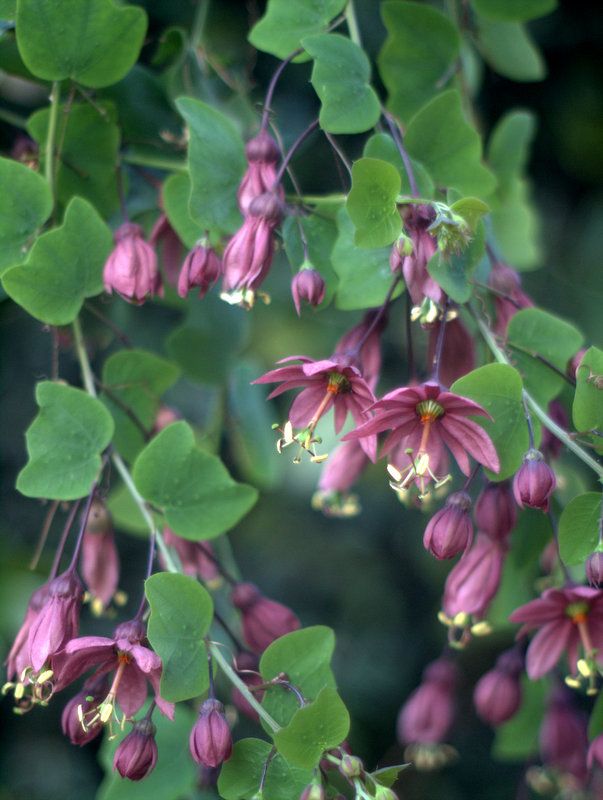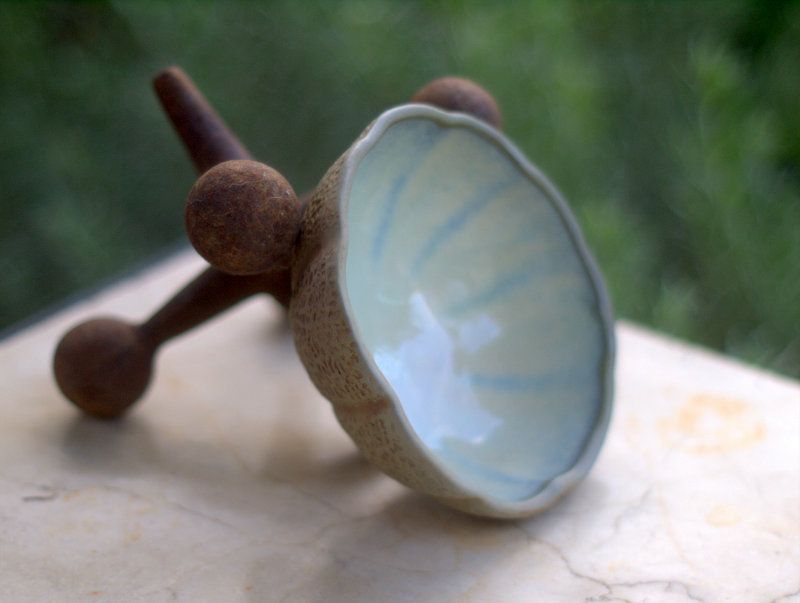Last Saturday, while millions marched their way into the history books, I was driving south to San Diego to meet agave expert Greg Starr. I had been looking forward to this 2-hour road trip for some time, as a beacon in an otherwise fairly bleak January. Family medical issues against the chaotic national backdrop were starting to take a toll. My guilt was somewhat lessened by the knowledge that our family would be represented by a marcher. Definitely count me in for the next one and the one after that. NPR covered the march for the drive south, and the recent back-to-back storms cleared to offer up a gorgeous, cloud-scudded and dry Saturday. Pardon my nativism, but California is so beautiful.
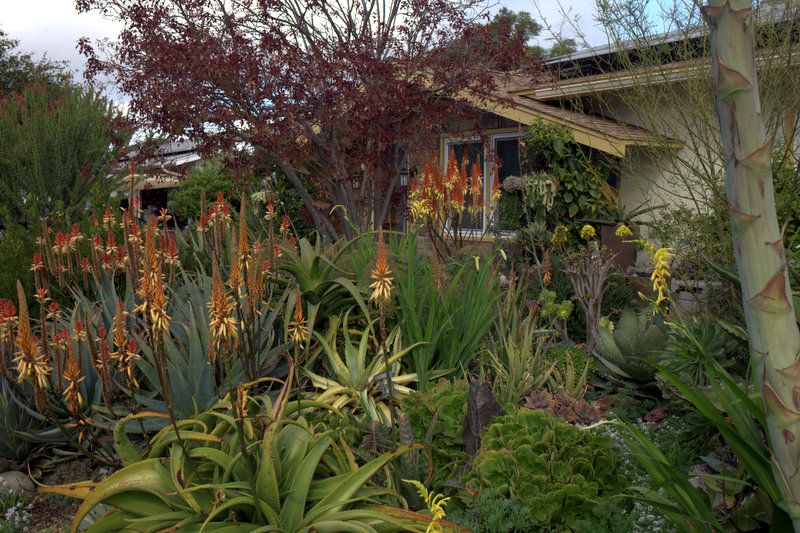
My destination was this private home where the San Diego Horticultural Society was hosting the talk by Greg Starr and a plant sale. Greg was bringing agaves!

The front garden was a life-affirming explosion of agaves and aloes. A blooming cowhorn agave, A. bovicornuta, is still a commanding presence, even among show-stealing flowering aloes.
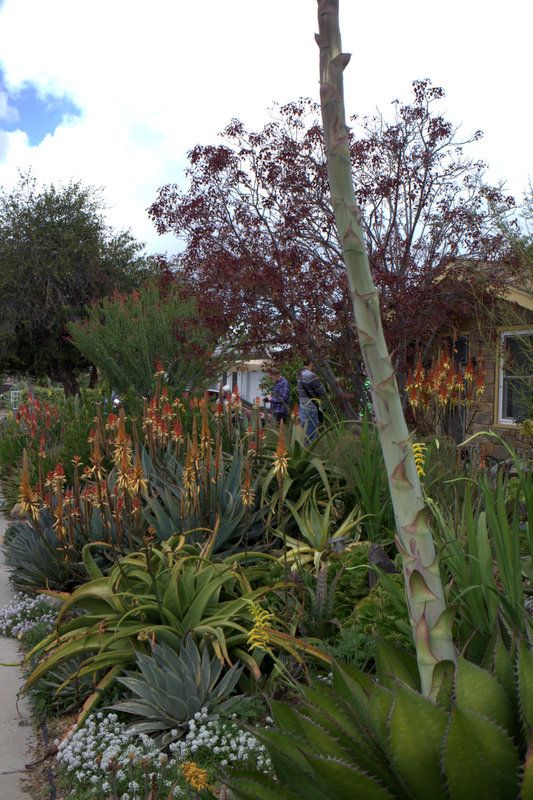
Tree in the background is Euphorbia cotinifolia.
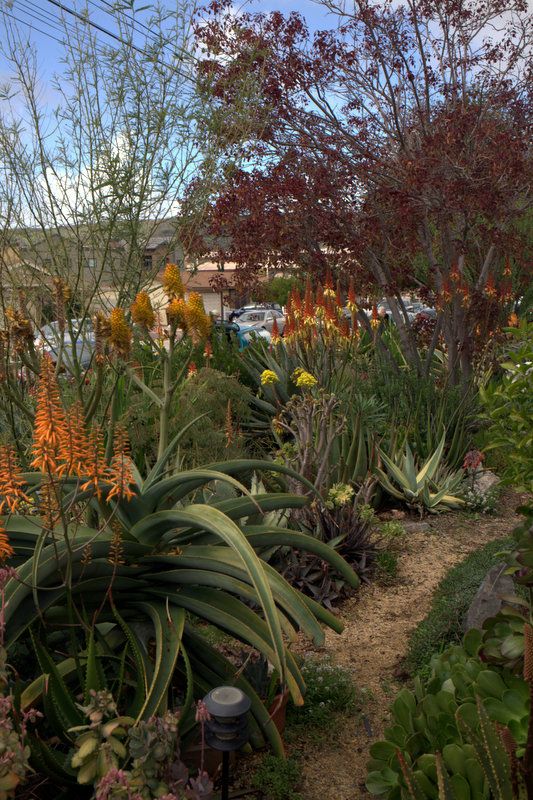
A narrow footpath runs a few feet in front of the house for access. I’d be guessing at aloe names, since the owner has access to some amazing hybrids. The bright orange in the left foreground looks a lot like my Aloe ‘Jacob’s Ladder.’
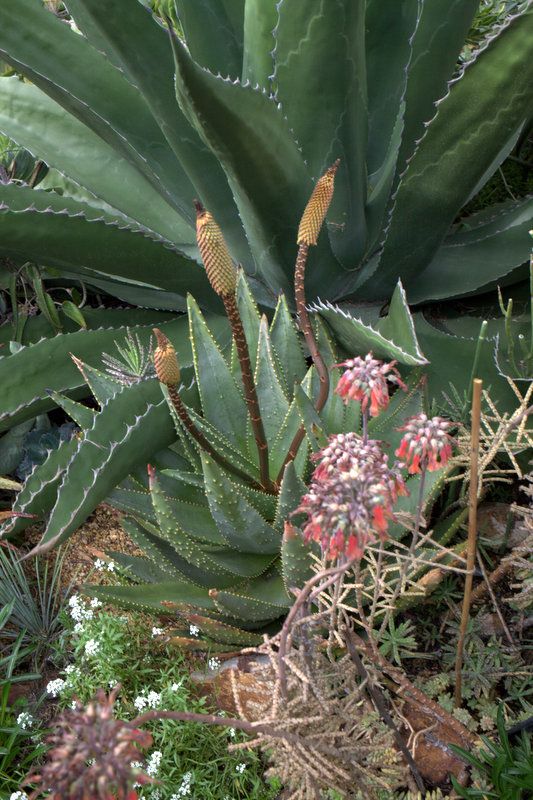
Agave ‘Jaws’ fronted by a marlothii-hybrid aloe in bud.
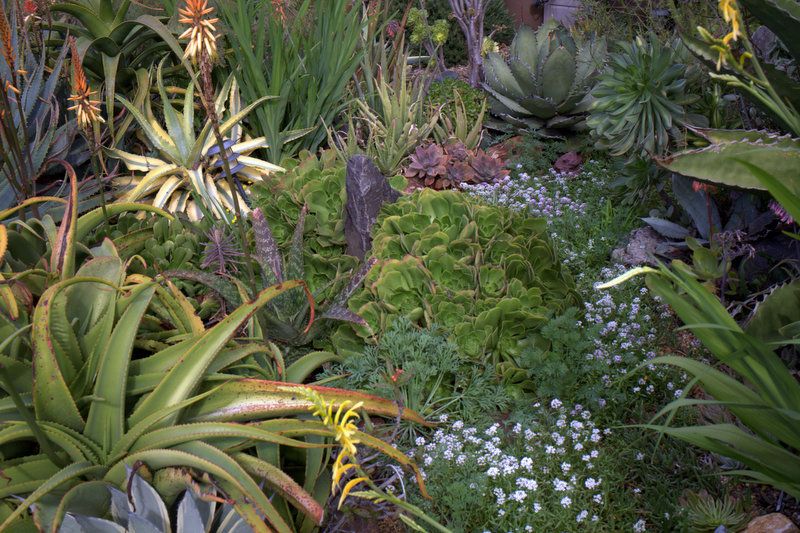
Incredibly tight tapestry of succulents, with some self-sowing alyssum and California poppies managing to find a root-hold.
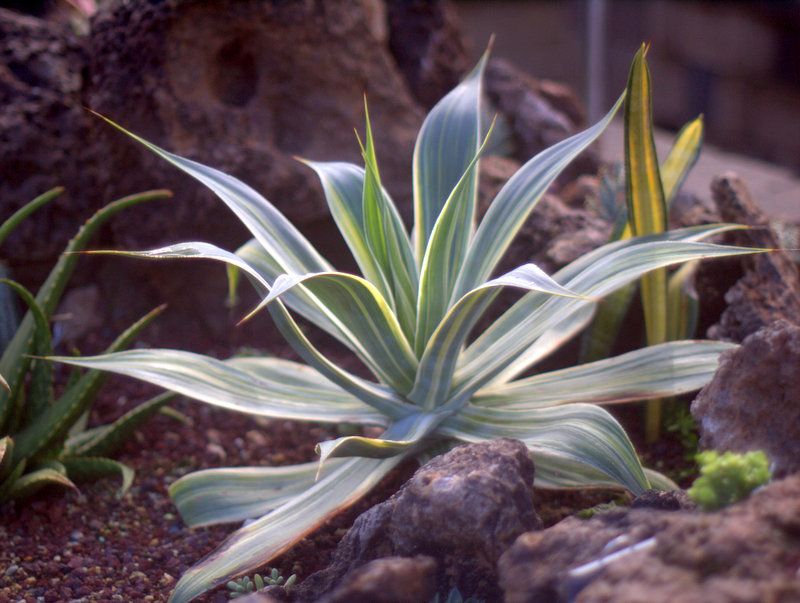
Unfortunately, Mr. Starr was unable to attend, probably due to the recent spate of severe weather and heavy rain. But the owner’s private collection of aloes and agaves was more than enough compensation. That’s Agave ‘Streaker’ above in one of his raised beds in the backyard.
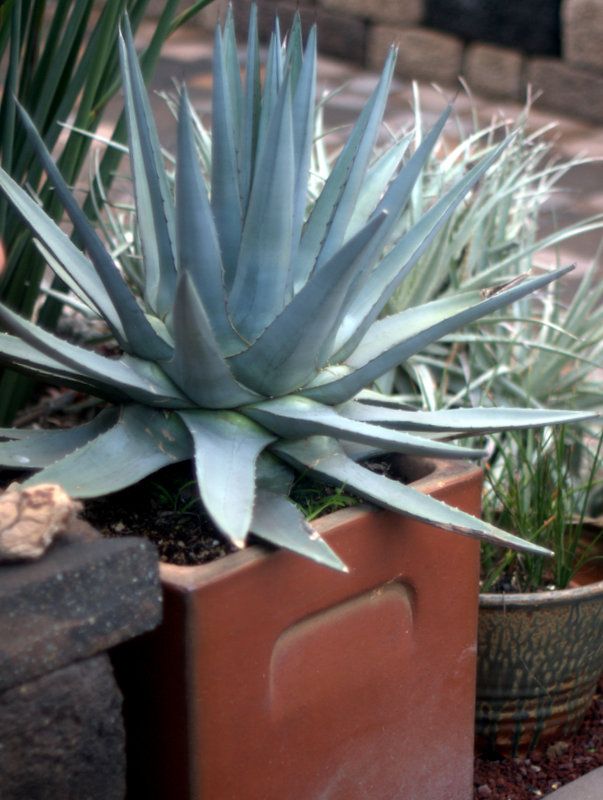
Agave pumila, at a size I didn’t know they achieved.

Selection of Agave utahensis

Aloe longistyla, touchy about drainage, prone to mites, but so beautiful, flaunting some of the largest flowers of any aloe in relation to clump size.
The San Diego Hort. Society members provided lots of interesting plants for sale, including a variegated agave I can’t find a reference for (‘Northern Lights’ — anyone?) With the Mini already nearly full to capacity, I stopped at Solana Succulents on the way home, detouring west to its location directly on Highway 1 in sight of the Pacific. Owner Jeff Moore manages to tuck in a stellar selection of rarities in a relatively small-size nursery. Here is where I finally found the long-coveted Agave weberi ‘Arizona Star’ in a gallon.
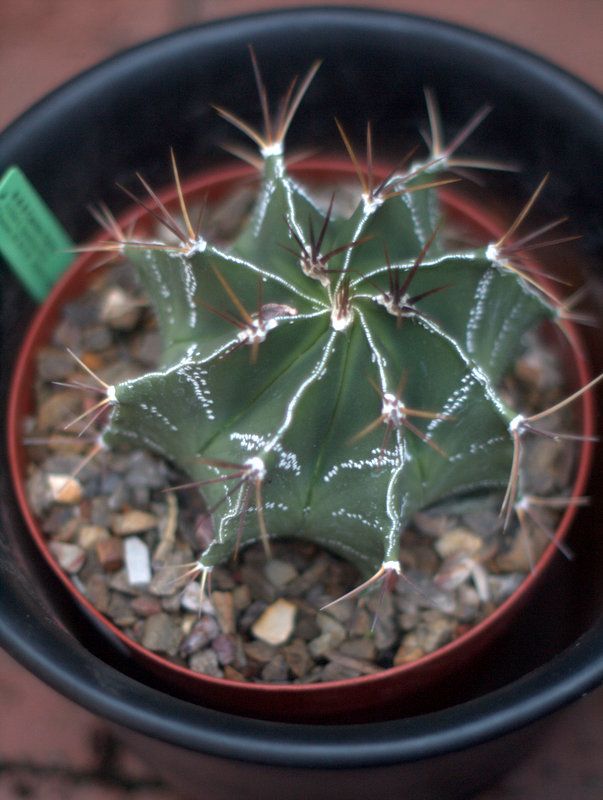
A nice shipment from B&B Cactus Farm was on the shelves, like this Astrophytum ornatum. I also brought home a Parodia magnifica.

And another cowhorn agave.
I don’t think I’ve had Jeff’s self-published book out of arm’s reach since I bought it last Saturday. “Aloes & Agaves in Cultivation” is everything you’d expect from someone who knows all the growers, hybridizers, and designers in San Diego County. He’ll be speaking closer to home, at South Coast Botanic Garden in Palos Verdes, this March. And February’s speaker doesn’t look bad either (Panayoti Kelaidis!)


